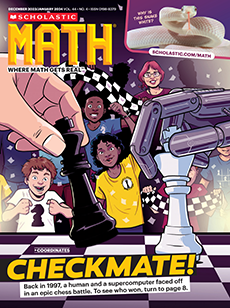Instruct students to draw a map of the classroom or room they are currently in on a blank sheet of paper. Tell them to include furniture within the room, such as desks, bookcases, and chairs. Ask students to describe where on their maps some of these objects are. Then tell students to fold their maps into 16ths by folding the paper twice horizontally and twice vertically. Have students unfold the map and now describe where on their maps some of the various objects are. Then ask: Did the folding help you more easily describe the location of the objects in the room? Explain why or why not.
CCSS: 6.NS.C.6.C, 6.NS.C.8, MP3, MP4, MP5
TEKS: 6.11A
*Additional standards covered in Skill Builders.
